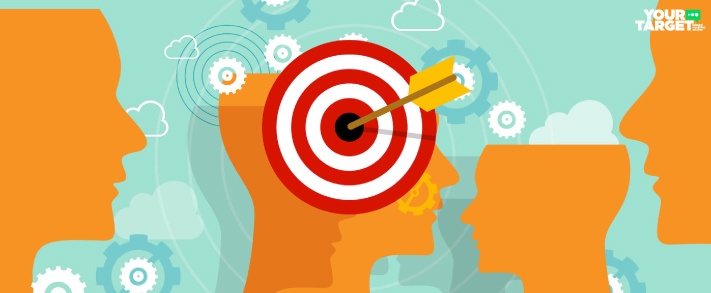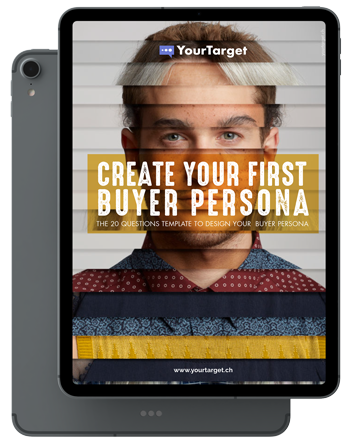When you carry out a marketing strategy, the first thing to take into consideration is client segmentation. Unfortunately, many B2B campaigns nowadays continue to use certain methodologies to identify their own obsolete audience, that don’t reach the desired objectives. In these cases, Prospective Buyers come to the rescue! In this article, we’ll explain what they are, how to identify them and why they are, by definition, the method to undertake if you wish to reach the right audience. Let us begin!
Who Prospective Buyers are and why they are at the frontier of client segmentation
There are numerous definitions online in regards to Prospective Buyers, but we’ll mention the most clear and synthetic one: Hubspot’s.
“Prospective Buyers are imaginary characters that incorporate the needs, wishes and characteristics of your potential clients. They help you to better understand your audience and segment it in a manner that satisfies the needs of every person under your scope.”
Many believe think this is a marketing strategy that has landed on the market in recent years. In reality, it was used for the first time in the ’50s by Seventeen, the American magazine for teenagers, that described one’s Prospective Buyer in this way:
“Teena, the high school girl, has a bundle of problems. She represents what adults would call a “bizzare” teenager – too tall, too plump, too timid – a bit “too much” of many little things, that for Teena, however, are enormous issues. Although she doesn’t bother her mother with all these thoughts, Teena writes to her favorite magazine to get some advice on the clothes she wears, the food she eats, the lipstick she uses, the small room she uses as a hiding spot, the pocket money she receives and the young man she has a crush for.”
Now, the paragraph above is an excellent example of how a Prospective Buyer is made. This character is not just statistics and demographic data, (which are undoubtedly fundamental), but has a name, an appearance, dreams, hopes, a cultural and familiar background.

Although it may seem absurd, it’s just these elements, “dotting the i’s”, that help a marketing manager to achieve a campaign that involves evoking the emotions and genuine needs of potential clients. Don’t believe it? HubSpot produced a comparison, using statistics, illustrating the differences between “classic” client segmentation and the use of Prospective Buyers. In summary, the following results emerge:
- traditional demographic marketing identifies too vast of an audience to use targeted promotional strategies with;
- if you solely use “classic” client segmentation methods, you’ll only end up locating 1 out of 10 of the people that really need your product/service;
- you waste 90% of your efforts while you look for the right audience;
- by using campaigns based on Prospective Buyers, you get visitors on your site that are 2-.5 times more qualified and likely to make a purchase;
- the click-through-rate of personalized emails is 14%, (which, we assure you, is a lot, as the average is between 0,5% and 3%);
These are just some of the strategies. We’ll now go into detail and discover how to build a Prospective Buyer and what characteristics this figure must have.
How to build your Prospective Buyer for effective client segmentation
Many industries, whether B2B or B2C, have not yet adopted the use of Prospective Buyers. The reason? The common belief is that it’s an imprecise and frivolous form of client segmentation. However, in reality, the construction of the Prospective Buyer starts from data used in traditional marketing. That is:
- demographics: origin, nationality, age and sex;
- level of education;
- occupation;
- financial status.
” Do you know your clients very well? Aren’t you sure? Well, use buyer pesonas! Tweet
In combination with this “raw” data, details are added to help the brand create a campaign that instills a genuine dialogue with its audience. I.e.:
- hobby;
- family and cultural background;
- means of comunication and information used;
- interests.
The following means are used to build a Prospective Buyer:
- focus groups;
- questionnaires;
- feedback request post-sale;
- telephone-interviews.

Often enough, marketing managers are discouraged by this enhanced form of data collection, because clients and potential clients are not likely to dedicate that kind of time to respond to personal and more detailed questions. Over the years, we at YourTarget have faced this possibility head on and have rolled up our sleeves.
The starting point is using existing clients and collecting the data we possess, such as origin, age, objectives. Later, when the moment of real contact arrives, (whether by telephone or in person), we must incentivate our interlocutor. Why is this person being contacted? Why is he/she being asked all of these questions? Simple, because this feedback is useful in order to implement a service that this client uses in first person! From the moment the client is investing in your service or product, the implementation of this data indoubtedly benefits him/her. Believe us, you’ll have those extra 10 minutes to ask all the questions you like.
Secondly, a tool that is ignored by many marketing managers, but in reality is under their noses and is very useful at this explorative stage, is social media. Just like that, checking out LinkedIn, Twitter or Instagram is a valid starting point to understand your potential clients! Do you sell software solutions and have found your potential clients are young startuppers, who are sensitive regarding themes like eco-sustainability or sports? Use this information to your advantage by proposing case studies, for example, that focus on the use of specific software in the sports-world or to implement for the protection of the environment! Do you sell shoes and is your target the abovementioned Teena? Explain to her why she should choose your product and why why it would make her feel better about herself! In short, aim for emotions and your client’s genuine needs.

Don’t think that once you have identified your Prospective Buyer, the work is over. You must always stay updated on the latest news and trends, because your audience is likely to change habits and interests. Are your targets Centennials and Millennials? Then maybe it’s time to look into that new, popular social media channel they use.
As we’ve stated on many occasions, traditional marketing is now outdated, because its main flaw is acting on assumptions and not listening to one’s audience. Brands were used to being in first place and establishing their clients’ needs and requirements.
If you’ve already read our posts, you surely know that we’re avid supporters of Inbound Marketing methods, which we’ve discussed in many contexts, and you know the advantages it carries.
However, here are some highlights for the newly arrived:
- Inbound marketing acts on methodologies that put forth useful content for one’s audience, aiming to “inform” the viewers on the utility of a product or service and distribute these contents on channels used by that very audience;
- the Inbound marketing strategy is customer-centric, or rather, the needs and necessities of the client come first;
- Inbound Marketing uses Prospective Buyers to offer targeted information and attract the right audience.
In order to offer revealing forms of content and attract your potential clients to enter what is called the Inbound Marketing Funnel, you must first know them! When a person ends up, for whatever reason, on a piece of content produced by you or directly about your product, they have to cry out, “Hey, this really is me! This brand speaks to me and truly knows me!”
Therefore, maybe it’s better to invest some additional effort in building your Prospective Buyer to elaborate on a targeted strategy, instead of meandering in uncertainty and asking yourself why the results you hoped for aren’t coming.
Why not start by download our free template to build your Prospective Buyer with? There will be nothing left to do but harmonize with your audience and produce quality contents!

